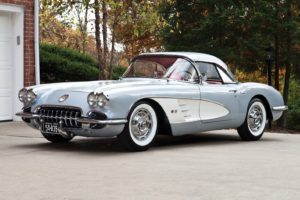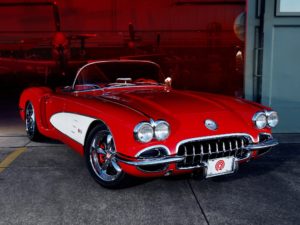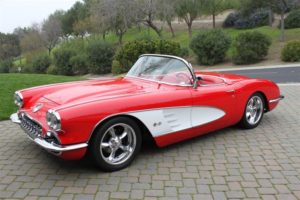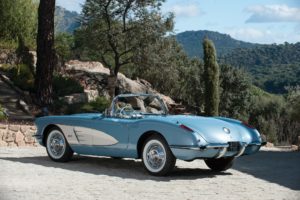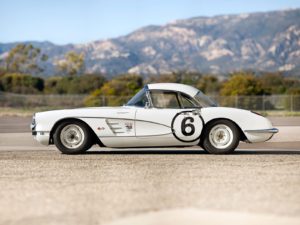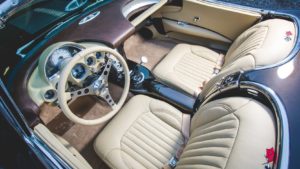It is said that when you find something that works, don’t change it. For Chevrolet, this sentiment resonated amongst the senior designers of the Corvette. Despite the conceptual changes that Bill Mitchell had been toying with since 1958, the reality was that the Corvette was going to be around in its current form for a few more years. From a sales standpoint, this seemed to sit just fine with GM executives, who had watched the Corvette’s financial successes gain more ground with each passing year. Even in 1958, when an economic recession impacted so many manufacturers, the Corvette had succeeded in turning a profit.
Surely, the Corvette still had room to grow – even if that growth meant staying the same, and from 1959 to 1960, stay the same it did. From a design standpoint at least, the 1960 Corvette is virtually indistinguishable from the 1959 model. The body lines and chrome trim is nearly identical on both models. The interiors have virtually no distinguishable differences. In short, the 1960 Corvette was, from all design purposes, a continuation of the 1959 production model.
Pricing :$3,872.00
Engine options: 283 ci. V-8 (fuel injected or carbureted) – multiple-horsepower options available
Transmission: 3-speed manual (standard), 4-speed manual (optional), 2-speed Powerglide (optional)
Top speed: 124mph
Units produced: 10, 261
Available colors: Tuxedo Black, Horizon Blue, Roman Red, Sateen Silver, Tasco Turquoise, Honduras Maroon, Ermine White, Cascade Green
Highlights of the year:
However – the engineers behind the power plant that gave the Corvette it’s heart and soul had something new in mind for the 1960 model year. The top two engines, both fuel injected or “fuelie” engines, received an increase in their overall horsepower.
The addition of solid lifters and a higher, 11.0:1 compression ratio boosted the strongest of the fuelie engines to 315-bhp at 6,200 RPMs. The second most powerful engine included hydraulic lifters (which made for easier maintenance) and pumped out an impressive 275-bhp at 5,200 RPMs.
Because of these performance increases, the Powerglide automatic transmission was no longer an option, as it simply could not handle the torque these new powerhouse engines generated. The carbureted engines that were also included as optional engines for the 1960 model remained the same as they had on earlier models.
The most conservative of these engines was a 230 horsepower engine that included a single, four-barrel carburetor. Next in succession of horsepower was a 245-bhp, hydraulic lifter version of the same engine that included a dual-quad carburetor. Topping these was the 270-bhp engine with twin four-barrel carburetors.
Although Chevrolet shied away from advertising the Corvette as a performance car after a ban on racing had been put into place by the Automotive Manufacturers Association ( or “AMA” for short), Chevrolet continued to offer many performance options for the 1960 model year.
Aside from the optional, “beefed up”, 315 horsepower engine which carried an additional cost of $484.20, there was also the option of ordering Positraction for $43.05 and a four-speed gearbox for $188.30. Additionally, the metallic brake linings were again made available as a $26.90 option.
Whereas a few short years ago the Corvette was railed by critics for its lack of performance, the Corvette had come into its own as a genuine sports car both in the United States as well as around the world.
In 1960, Corvette overcame the sales hurdle that had eluded it for so many years – it sold more than 10,000 units that year. In fact, 10,261 Corvettes were sold in 1960, braking the psychologically important “10K” barrier and making it the most successful Corvette (from both a performance and a sales standpoint) yet. Corvette had proved itself to the General Motors executives and its long term future was most definitely assured.
Photos of the 1960 Corvette:
Sources:
https://www.corvsport.com/1960-c1-corvette/
https://www.corvsport.com/1960-c1-corvette-image-gallery/
https://www.mecum.com/lots/SC0516-243492/1960-chevrolet-corvette-resto-mod/
